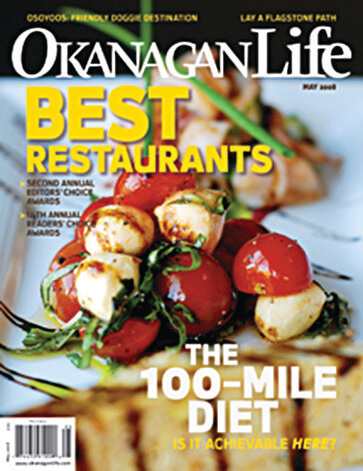
If Kelowna continues to lose farmland and other important open spaces, then it will have sacrificed the qualities that made it desirable.
Want to eat healthy, help farmers and save the planet?
Get ready to travel a long and winding road
by Lisa Harrison
A simple, grassroots idea is rippling around the world. As it spreads, it is meeting head-on such issues as food security, fossil fuel use, international trade pressures, insufficient government support and urban-rural land conflict. People are starting to examine their eating habits. Farmers are feeling flush with all the attention.
When Vancouverites James MacKinnon and Alisa Smith vowed in 2005 to find their daily bread locally for an entire year, they had no idea that their book, The 100-Mile Diet: A Year of Local Eating, and their online chronicles would create a movement. Their stories on www.TheTyee.ca sparked international interest, prompting reporters from major networks like the BBC and CBC to clamour for interviews.
Meanwhile, MacKinnon and Smith were busy just trying to find a sufficient variety of local foods to keep with the plan. They wrote about their efforts to find satisfying starches other than potatoes and a substitute for sugar to preserve their strawberries for winter. They couldn’t have a Big Mac or a cup of coffee and merely dreamed of buttered bread until they found one rogue Fraser Valley farmer growing wheat.
The 100-Mile Diet is creating a new level of consumer awareness. Occasionally humorous and always sincere, it introduces the simple concept of eating only foods grown within a 100-mile radius of home. It encourages people to live in closer harmony with the seasons, support local food producers and reduce the greenhouse gases generated by transporting products over long distances. Considering that the average Canadian meal has travelled 2,500 kilometres to reach the dinner table, the 100-mile diet is a radical change from the way most of us eat.
Local Larder Sorely Limited
In the Okanagan Valley, where some of the hills are still a picturesque patchwork of farms, orchards and vineyards, it should be easy to eat locally, right? That depends largely on the season and how ambitious you want to be. In early spring, stored crops such as root vegetables and apples are dwindling and no new crops are available. It’s a time that tests the resolve of 100-mile dieters. I take up the challenge.
My first stop is the neighbourhood grocery store. Nature’s Fare carries BC apples that were likely grown in the Okanagan although the exact origin is not indicated. There are a few cheeses, milk, eggs, dressings and honey. Hungry and desperate for more variety and more fresh food, I visit other stores.
Save-on Foods and Safeway each carry Kelowna apples, BC onions, potatoes and mushrooms, as well as BC hothouse tomatoes, cucumbers and peppers. With a BC Hot House label you’d think it would be safe to assume they were grown in the temperate Fraser Valley, but think further south — much further south.
For years, BC Hot House Foods Inc. has been importing produce from Mexico and applying the BC Hot House label. Although the Canadian Food Inspection Agency ordered, two years ago, that Product of Mexico labels be more prominently displayed, the practice is inconsistent to say the least. Maureen Sheehan, the company’s director of marketing, says it’s too expensive to grow enough produce in British Columbia over the winter. Starting next winter, produce imported from Mexico by BC Hot House Foods will be labelled MX Hot House.
My next stop is Choices Market. I find Okanagan mushrooms, Sicamous milk, Armstrong cheese, Vernon popping corn, Salmon Arm chickens and Cawston apples and pears. The shelves offer salad dressings, honey, vinegar, dried spices and juice from Kelowna. There are also temptingly packaged (and commensurately priced) jars of preserved cherries and other fruit from the Mission Hill Family Estate in Westbank. The eggs are confusingly labelled Kelowna/Kamloops, the latter being 50 km (30 miles) beyond the diet’s boundaries.
The quest continues at Quality Greens, which, in addition to the standard BC apples and potatoes, stocks milk, yogurt and gourmet vinegars from Summerland, hams from Winfield, sausages from Vernon and cheeses from Salmon Arm to Penticton. One of my more unusual finds at this store is Squeaky Cheese, a product developed by David Beaudoin, a former Quebecer who works here when he’s not at the cheese factory in Armstrong.
“When I came from Quebec, I couldn’t find good quality cheese curds. Everything was refrigerated for weeks and was yellow,” says Beaudoin, rolling his eyes. Traditionally, curds sans beta carotene pigment are eaten within 24 hours and at room temperature. “I started making trips to Armstrong where they would make the curds the way I liked and then lots of people started asking me to bring some back for them …. That’s when I got the idea to work with the factory to create Squeaky Cheese.” (The name comes from the sound this cheese should make when it’s chewed and is familiar to many easterners as a folksy descriptor for curds.) I’m glad it qualifies for the diet.
My search for locally produced food eventually leads me to the Kelowna Farmers’ and Crafters’ Market. On a brisk April day tables display jewelry, woodcarvings, baked goods and pottery but very little fresh produce. In fact, the only items available are peppers and cucumbers grown at Graeme James’ hothouse in North Glenmore. During the coldest, darkest days of the year (November to April) his operation doesn’t produce a harvest at all, leaving 100-milers with little choice but to revert to those staple apples and potatoes.
This meagre variety of local fruits and vegetables is enough to derail even die-hard followers of the diet. But this may change as more people request a greater diversity of local products. MacKinnon suggests it should be possible to obtain beets, carrots, turnips, parsnips, squash, potatoes and sunchokes in the Central Okanagan.
“Winter is actually my favourite season of local eating,” he says. “People tend to find that surprising. It’s when the food feels just right to the season for me but it’s also a time when I can really see most clearly how the choices I’m making are different from the mainstream.
“I think more important than what is immediately available is how people prepare for winter. Preserve some of the big harvest that comes from late summer into fall so you can draw on it during the winter. That’s the best way to have a really diverse winter diet.”
Preserving the bounty of the growing season like our great-grandmothers did is back in vogue. Summerhill Pyramid Winery executive chef Jesse Croy captures the fragrance of fresh basil in pesto; sweet, ripe tomatoes in homemade sauce and plump berries by fast freezing. He purées and freezes herbs and vegetables, many from the winery’s organic garden, located just below the restaurant patio and managed by the owner’s sons.
“I like to go down to the garden when I have time and pick some fresh basil, oregano, lettuce and tomatoes,” Croy says. “Guests love to smell the herbs and see the food come right out of the garden.” On this unexpectedly snowy April day, his menu includes local apples and apple cider, goat cheese, pork and quail. During the growing season, he buys a wide range of produce from area farms. This busy chef only wishes he had more time to freeze, can and dry food to meet the increased demand for a local dining experience.
Food Production — Boost it, Don’t Block it
Finding sufficient and steady supplies of homegrown food is a problem for restaurateurs and shoppers alike. Keith Duhaime, agricultural support officer for the Central Okanagan Regional District is confident that stores would handle more local produce if it were available and sees more need for farmers to actively participate in regional farmers’ markets.
“One of the biggest challenges right now is labour,” he says. “There are programs such as the Seasonal Agricultural Workers Program (SAWP). However, housing and other requirements can be challenging and local governments are still awaiting some direction on secondary dwellings on farmland for this purpose.”
Raising livestock requires great skill and commitment. Although financial rewards are unpredictable, Duhaime alludes to a rosier future for those who are adaptable. He uses the example of artisan cheese makers raising goats and sheep. “The baby boomers might have had milk and cookies before bed when they were 15. Now that they are 55, a glass of Merlot and a slice of pecorino (firm sheep’s cheese) is more their pre-bed desire.” The baby boomers are a lucrative market for high-end items from specialty producers.
Regulations and lack of infrastructure often create roadblocks for local livestock producers. Poultry and eggs, for example, require quotas. There are also far fewer local abattoirs and less capacity due to the Meat Inspection Regulation instituted in September 2007. Previously, there were approximately 180 small-scale chicken farmers in the Central Okanagan relying on a local mobile abattoir operator. With the new regulations, the operator decided to retire rather than deal with the red tape. Duhaime is helping some operators navigate the regulations.
Another barrier is the lack of affordable land in the Valley. Agricultural Land Reserve (ALR) property sells for an average of $100,000 per acre in the Central Okanagan. “Leasing is an option, but usually farming also requires equipment and working capital,” says Duhaime. “Getting access to these from sources such as Farm Credit Canada usually requires collateral in the form of land and/or quotas (dairy, poultry, eggs), which new entrants often do not possess …. A farming trust to support young farmers might be a solution. We also need policies that encourage land holders to lease their land if not currently using it themselves.”
This concern for the next generation is shared by Richard Bullock, a Kelowna orchard owner who has served as president of the BC Fruit Growers Association, BC Tree Fruits Ltd., Sun-Rype Products Ltd. and director of the Canadian Federation of Agriculture. Like Duhaime, Bullock would like to see some type of leasing arrangement established to help the younger generation get into the industry. And he knows just where to start.
“Someone can buy ALR land and not grow anything on it …. When someone buys five or 10 acres and puts on a $2 million home, it’s no longer very viable for anyone who wants to come along in later years and farm it. Although there is a requirement that they grow $2,500 worth of food, there is a loophole allowing them to just show that they have the capability of producing $2,500 worth of food. Anybody can get around that. They get all the land tax breaks that legitimate farmers do,” he says.
“Politicians keep saying that only three to four per cent of land in this province is useful for agriculture, so they better step up to the plate and make sure it’s being used.” One option Bullock suggests is a law requiring “estate” owners on ALR land to provide long-term leases to people interested in farming their property.
In addition to waste of agricultural space, Iona Smith, a representative of Smart Growth BC, says that each year developers try and sometimes succeed in taking land out of the ALR. “In some communities there is no plan or zoning protection — developers are salivating.”
Kevin Hanna, who teaches environmental impact and resource policy at Wilfrid Laurier University, says that Kelowna is at a crucial threshold. “If Kelowna continues to lose farmland and other important open spaces, then it will have sacrificed the qualities that made it desirable.” He would like to see more extensive public transportation; support for farmers through taxation or other policies; municipal policies that require innovation in building design/densities; and an end to the wrong types of development. “Think about the community you want 10 years from now, not the community that some developers want to give you,” he warns.
Joe Sardinha, president of the BC Fruit Growers’ Association and an active orchardist, lobbies for programs and policies that directly benefit our food producers. He hopes that the BC government will spend more on agriculture including a continuation of replanting grants and expanding the wildlife compensation program.
“BC government support for agriculture is lagging behind that of all other provinces,” he says. “I’ve calculated that for BC to even be on a level with other provinces, we would have to increase the budget to some $200 million to really make a dent in making sure that farms survive for the betterment of British Columbians.”
Food security has already reached a crisis in many parts of the world where rising prices and shortages have sparked riots and threaten social and political instability. Currently, only about 50 per cent of BC food requirements are met with provincial production.
Farmers Focus on the Future
Despite the challenges, Okanagan farmers are willing to learn the skills and undertake the projects necessary to be successful, whether or not they concentrate on producing food. They are creating world-class products and researching and implementing a range of value added concepts.
High above the town of Oyama, Jim Covington and Darlene Homenchuk raise alpacas for their ultra-soft fleece. Indigenous to the Andes, these animals seem right at home grazing on the sloping ground in the day’s unseasonably cold wind. Covington and Homenchuk bought the land nine years ago and purchased six males and six females. The herd on the Oyama Lake Alpaca Farm has grown to 30. The tame, inquisitive animals lope across their enclosures at the sound of Covington shaking a grain scoop. The herd is sheered at the end of April to collect approximately two kilograms of the lightweight fleece per animal.
Inside their home-based store, the couple sells an impressive array of alpaca fleece products including delicate, luxurious scarves that could easily grace the aisles of Holt Renfrew. A former investment banker, Homenchuk didn’t know how to make any of these products before starting the farm. She learned to spin from the Ponderosa Spinners, Weavers and Fibre Artists Guild and now even dyes her own yarn to meet the requests of local buyers. As the herd has grown, she has hired other skilled knitters and craftspeople.
Marlys Wolfe, co-owner of Falcon Ridge Farms in Kelowna, is an enthusiastic entrepreneur who had retired, but feeling restless, acquired the farm with her husband in 2003. She saw an ad in the newspaper from a company looking for an echinacea grower and took up the challenge. After some disappointments with distribution, she joined the BC Herb Growers Association. “They were more fledgling than me. I ended up doing the marketing, updating the website and helping get it established,” says Wolfe, who is now the vice-president of the association.
“Marketing is a major hurdle. I’ve hired someone to help with wholesale marketing. I’ve been to two trade shows in Japan and have a booth at the Canada Export Centre in Vancouver …. We are also thinking about fixing up a motor-home with the business colours and website address then travelling to farmers’ markets and tradeshows.”
Wolfe’s 86-year-old father recently built her a specialized root digger and a mixing machine. Now the six-acre farm produces a range of organic teas, honey, beeswax and eggs. Alpacas and goats enjoy a playful game of chase in a large pen while turkeys and chickens step gingerly out of their way. The first shoots of the pink-flowered echinacea plants have broken ground all around the house. Attractive buildings on the property are intended to draw tourists and wedding ceremonies. Wolfe may just have the world’s prettiest outhouse.
Back at the Bullock orchard, a four-month-old border collie is tugging on its leash. He’s anxious to explore the April snowfall along the rows of knobby, winter-bare fruit trees near the house. Bullock has bought two puppies from Manitoba and plans to use them to herd sheep.
“We have a lot of training to do,” he says as he sizes up the pup licking a snowflake off its nose. This 60-something orchardist, who minutes earlier said there’s nothing new under the sun when it comes to creative approaches to farming, could indeed be learning new tricks — or relearning old ones. Bullock plans to add value to his farm by raising lambs for meat among the orchard trees.
Give it a Try
For the most part, however, Bullock is probably right. Farmers claim that they’re already doing all they can to make their operations economically viable and that they’re stretched to the breaking point. The North American Free Trade Agreement facilitates the importation of inexpensive foods from countries where labour, land and living costs are a fraction of Okanagan Valley levels. Government funding for agriculture has been cut to just 0.003 per cent of the provincial budget. The business is becoming less attractive to newcomers at a time when many baby boomer farmers are nearing retirement.
With global attention finally focused on food security, now is the time to sway politicians to introduce programs and laws that foster a cleaner environment and ensure our ability to feed ourselves in the future. And while most people aren’t willing to even attempt sticking to the 100-Mile Diet, now is nevertheless definitely the time for consumers to support farmers and eat locally more often.
Read more of the original stories celebrated in our 30th-anniversary issue.
Wine reviews: Valley expressions of bold red wines
As seen in [downloads ids="156027" columns="1"] Summerland Pyramid Winery 2014 OM Organic MeritageKelowna, Okanagan Valley1/2 $65 This Bordeaux blend is very new-world in style. Full-bodied and robust, it is a wonderful presentation of ripe dark fruits...
Beautiful blends
Even a blend of one or two percent can make a significant difference in wine, says sommelier Mike Lee.
Kitchen Confidential with Todd Laidlaw of True Grain Bakery
Baking up a storm with heritage wheat
Retail Real Estate Revolution
Okanagan developers are reviving urban centres with a mix of workplaces, greenspaces and lofty living.
Whites: Best of BC Wine Awards 2018
Let’s celebrate the wines from our fourth annual Okanagan Life Best of BC Wine Awards, this year held at the Delta Hotels Grand Okanagan. Our judging panel was a select group of independent, experienced wine judges from the trade, restaurant and education...
In the kitchen with Kristina Klein at EATology
At the bus stop Young Vernon chef serves up the science of eating fresh food It started out as a side thing, but then it just took off, says Kristina Klein, founder of EATology, an unusual bus depot diner in Vernon. It’s modern, but funky, with wooden floors instead...
Wine reviews: Sperling Sparkling Brut
Sperling Vineyards 2011 Sparkling Brut Kelowna, Okanagan Valley 1/2 $40.00 Reminiscent of a fine quality Champagne, this single vineyard Pinot Blanc sparkling wine is grown organically and biodynamically, allowing it to truly represent its own unique...
Garagiste winemakers
A garage can make for a passionate first crush At 650 metres above sea level, Forgotten Hill Wine Co. is the highest-elevation vineyard in the South Okanagan — a nod to a tract of land way up the hill on a forested, gravel road past...
Penny wise: Confessions of a thrift store shopper
Back in the swinging sixties, I was six and still enjoying playground swings. It was not until I was out of my brown school uniform and had started working that I realized what I’d been missing out on, fashion-wise. My hard-earned money...
Countering Trump’s Canada Dementia
A Guest Column by Peter Petrosino Responding to "Canada Is Older Than the USA." In the words of former Canadian PM, Jean Chretien, US President Donald Trump has made “unacceptable insults” and ‘unprecedented threats” targeting Canada. But what can you expect of a US...
Carbon is Not the Enemy. End Chemtrails!
Look in the Sky and Notice the Harm Being Done. Ask questions. Demand Answers Hall’s Introduction We are are being induced to feed and consume the Netzero/Climate Change nonsense being peddled by the predators disguised as our governors. Carbon is not our enemy....
Yes, Schools are Transitioning Kids!
The School to Medical Pathway Image from CNN Woke Watch Canada is a reader-supported publication. Please consider becoming a paying subscriber or making a one-time or recurring donation to show your support. Today’s post continues a Woke Watch...
SUGARCANE’S HORRIFIC FALSE AND UNVERIFIED CLAIM THAT BABIES WERE THROWN INTO THE ST JOSEPH’S INCINERATOR LIBELS CANADA AND THE CATHOLIC CHURCH
Chief Willie Sellars and Sugarcane co-directors Julian Brave NoiseCat and Emily Kassie were at the Kamloopa PowWow Grounds next to where 'the remains of 215 children' were allegedly found but didn't interview anyone in the Kamloops Band Woke Watch Canada is...
Breaking: Claims That Childhood Vaccines ‘Saved Millions of Lives’ Based on Flawed Models
In a paper published today, all-cause mortality expert Denis Rancourt, Ph.D., said claims by public health agencies and top medical journals that childhood vaccination prevents millions of deaths annually are based on “tentative and untethered models of...
Welcome back to Okanagan Life Magazine
For over 40 years I absolutely loved being a journalist, magazine owner, editor and publisher of Okanagan Life, Lethbridge Magazine, Thompson Life and Medicine Hat Life. I started by publishing the Alberta Dusters Semi-Pro Basketball Program in 1980 in...

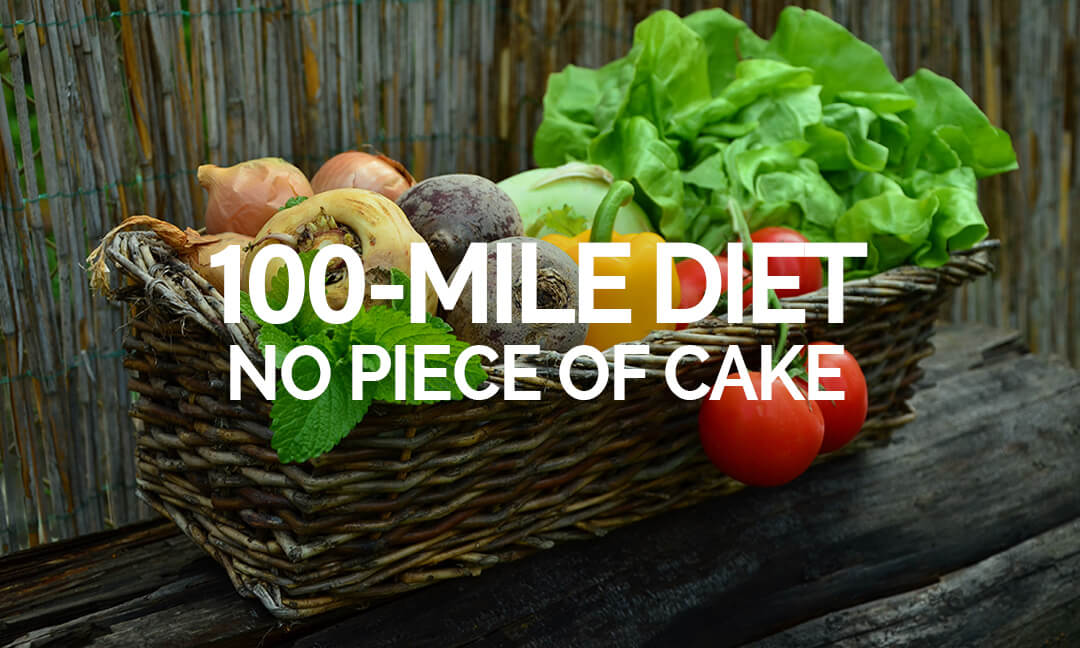

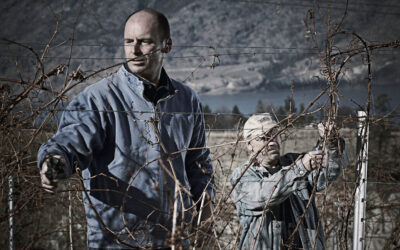
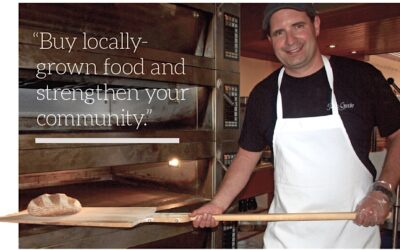

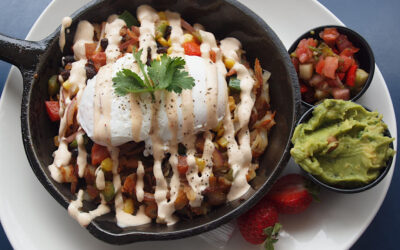
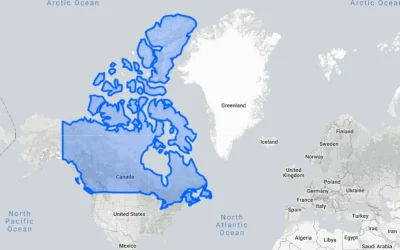





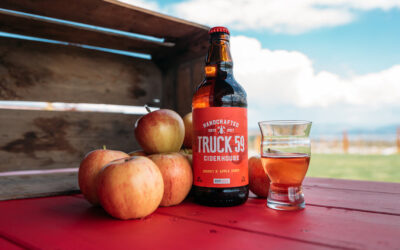

0 Comments